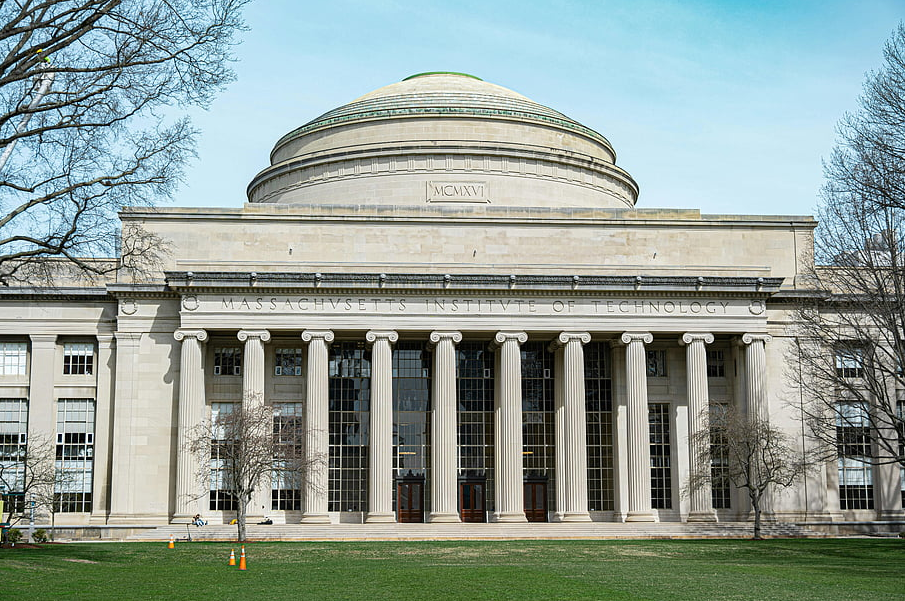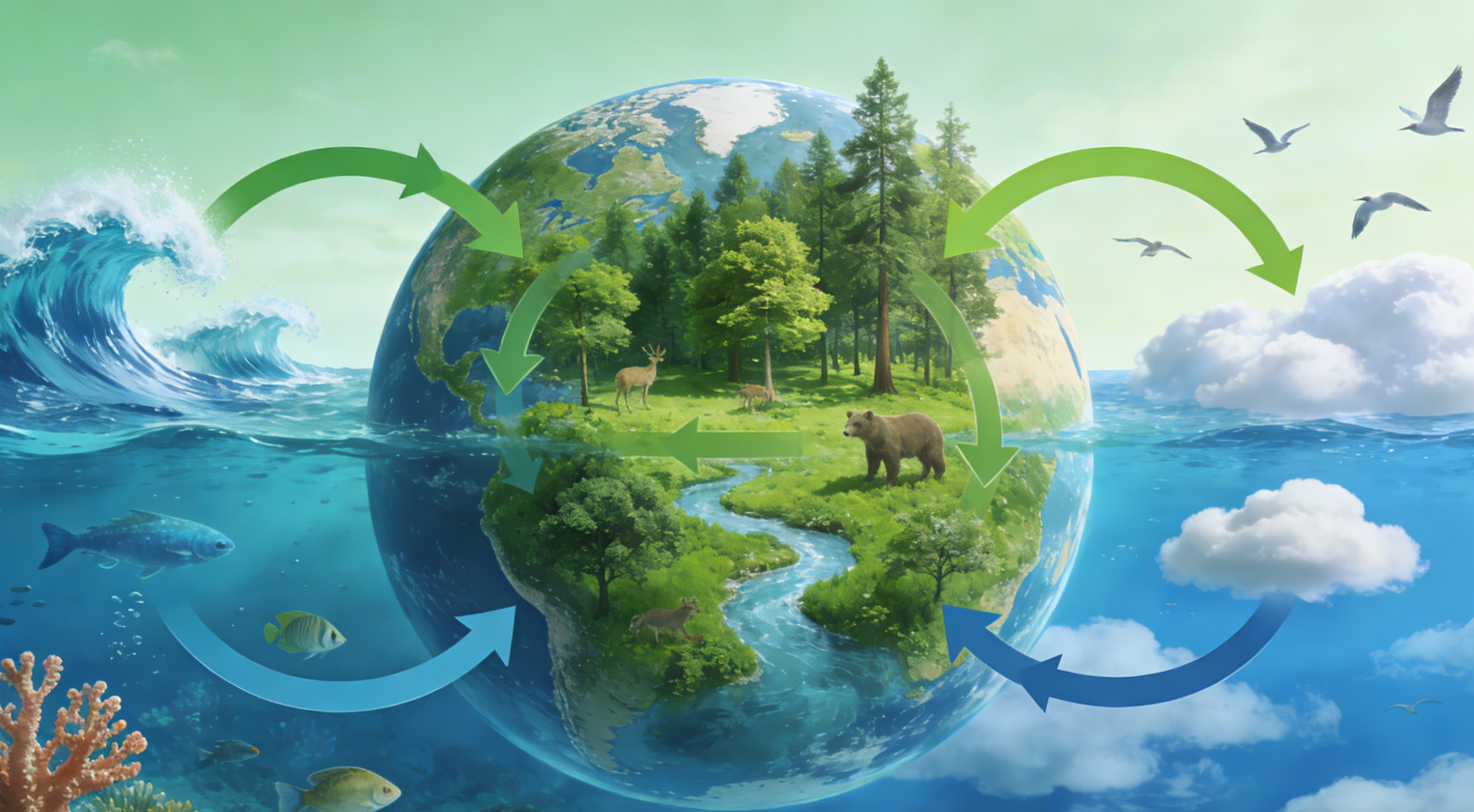Identifying the best colleges for environmental science is a top priority for students aiming to explore climate change. As sustainability becomes a global focus, top-tier institutions like Stanford, UC Berkeley, and Harvard are leading the way with innovative research in the environmental field. In this guide, we break down 10 American universities with the best environmental science programs, and help you make the best choice to pursue your dream.
Best Colleges for Environmental Science: Top 10 List
According to the latest QS Environmental Science program rankings, the following is a list of the top 10 schools in the United States for Environmental Science, including Harvard University, Stanford University, and MIT, etc. All lead globally in terms of research resources, academic environment, and industry influence.
| Ranking in the US (By Subject) | School Name | Overall Score | Location | Accommodation |
|---|---|---|---|---|
| 1 | Harvard University | 93.6 | Cambridge | Student accommodation near Harvard University |
| 2 | Stanford University | 91.9 | Stanford | Student accommodation near Stanford University |
| 3 | Massachusetts Institute of Technology (MIT) | 91.8 | Cambridge | Student accommodation near MIT |
| 4 | University of California Berkeley (UCB) | 91.6 | Berkeley | Student accommodation near UCB |
| 5 | Yale University | 86.9 | New Heaven | Student accommodation near Yale University |
| 6 | Columbia University | 85.5 | New York City | Student accommodation near Columbia University |
| 7 | University of Michigan-Ann Arbor | 85.5 | Ann Arbor | Student accommodation near University of Michigan-Ann Arbor |
| 8 | University of California, Los Angeles (UCLA) | 85.2 | Los Angeles | Student accommodation near UCLA |
| 9 | University of California Davis | 84.4 | Davis | Student accommodation near University of California Davis |
| 10 | California Institute of Technology (Caltech) | 83.9 | Pasadena | Student accommodation near Caltech |
Top 1. Harvard University

- Location: Cambridge, Massachusetts
- Tuition & Fees: $59,076
- Average Need-Based Aid Package: $70,387
- Students: 21,613
- High School GPA: 3.9
- Student/Faculty Ratio: 7:1
- Acceptance Rate: 3%
- Graduation Rate: 87%
- Graduate Employment Rate After Two Years: 96.3%
- Median Starting Salary of Alumni: $86,549
Harvard University is a private Ivy League research university and one of the American universities with the best environmental science programs, and is the oldest institution of higher education in the United States. Its influence, wealth, and rankings have made it one of the most prestigious universities in the world. Harvard University is accredited by the New England Commission of Higher Education. Over more than three and a half centuries, Harvard alumni have contributed creatively and significantly to society, the arts and sciences, business, and national and international affairs.
Environmental Science and Engineering (ESE) at the Harvard School of Engineering and Applied Science (SEAS) is an interdisciplinary program focused on understanding, predicting, and solving the wide range of environmental problems associated with human activities. ESE undergraduate students receive a strong and broad education in mathematics, physics, chemistry, engineering, ecology, and modeling, in a way that uniquely prepares them for the interdisciplinary perspective needed to tackle environmental challenges.
Top 2. Stanford University

- Location: Stanford, California
- Tuition & Fees: $62,484
- Average Need-Based Aid Package: $72,000
- Students: 17,529
- High School GPA: 3.9
- Student/Faculty Ratio: 6:1
- Acceptance Rate: 4%
- Graduation Rate: 73%
- Graduate Employment Rate After Two Years: 89%
- Median Starting Salary of Alumni: $77,677
Stanford University, a private research university, is widely acknowledged as one of the most successful universities worldwide in attracting funding for start-up companies and also licensing its inventions to existing businesses. Alumni have founded numerous corporations, which, when combined, equal the tenth-largest economy in the world.
The Stanford School of Earth, Energy & Environmental Sciences is now part of the Stanford Doerr School of Sustainability. Stanford environmental science works to gain a better understanding of the planet’s history and its future, the energy and resource base that supports society, geologic hazards that impact a growing population, a changing climate, and the challenge of sustainability. It uses a variety of methods and tools to address our research questions, including field work, laboratory and experimental studies, and computer modeling. It also offers online environmental science degrees and the best undergraduate environmental studies programs.
Top 3. Massachusetts Institute of Technology

- Location: Cambridge, Massachusetts
- Tuition & Fees: $64,310
- Average Need-Based Aid Package: $66,663
- Students: 11,886
- High School GPA: 4.19
- Student/Faculty Ratio:
- Acceptance Rate: 4.6%
- Graduation Rate: 96%
- Graduate Employment Rate After Two Years: 95%
- Median Starting Salary of Alumni: $126,438
The Earth, Atmospheric and Planetary Sciences (EAPS) department at MIT offers a rigorous, quantitative approach to the health of the planet. Undergraduates in 2025 engage in capstone thesis research on topics ranging from carbon mineralization to the modeling of ocean turbulence. MIT’s environment emphasizes the physical and chemical processes of the Earth, making it a hub for those who want to solve environmental issues through hard science and advanced computation. It is a standout among colleges with environmental science for its sheer technical depth.
Top 4. University of California Berkeley

- Location: Berkeley, California
- Tuition & Fees: $15,891
- Average Need-Based Aid Package: $31,559
- Students: 45,307
- High School GPA: 3.9
- Student/Faculty Ratio: 19:1
- Acceptance Rate: 11%
- Graduation Rate: 82%
- Graduate Employment Rate After Two Years: 87%
- Median Starting Salary of Alumni: $54,348
University of California, Berkeley is the first public land-grant research university, and is the founding campus of the University of California system. Berkeley was a founding member of the Association of American Universities and was one of the original eight “Public Ivy” schools.
The Environmental Sciences program at the University of California, Berkeley provides a broad, comprehensive education in the fundamentals of biology, chemistry, math, physics, and social sciences. The discipline involves the study of interactions between human activities and biological and physical environments on all scales, from the local to the global. Environmental Sciences majors finish their degree with a year-long research project, the senior thesis. Students investigate an environmental issue, design and execute independent research, and present their results in oral and written form. The Environmental Science, Policy, and Management Department’s Environmental Sciences (ES) major is a top-rated, interdisciplinary program that deals with the impact of human activities on natural systems.
Top 5. Yale University

- Location: New Haven, Connecticut
- Tuition & Fees: $64,700
- Average Need-Based Aid Package: $70,295
- Students: 12,093
- High School GPA: 3.9
- Student/Faculty Ratio: 6:1
- Acceptance Rate: 5%
- Graduation Rate: 88%
- Graduate Employment Rate After Two Years: 94%
- Median Starting Salary of Alumni: $60,511
Yale University is a private Ivy League research university and one of the best environmental science schools with environmental sciences in New Haven, Connecticut. Yale is the third-oldest institution of higher education in the United States, and one of the nine colonial colleges chartered before the American Revolution. Yale has produced many distinguished alumni in various fields, from the public to the private sector, including U.S. presidents, Founding Fathers, living billionaires, college founders, and many heads of state.
Yale School of the Environment Science’s centers, programs, and initiatives offer diverse research, fieldwork, training, and events in areas ranging from environmental justice to climate change communication to the environmental impacts of global urbanization.
Top 6. Columbia University
School: Columbia University
Location: New York, New York
Tuition & Fees: $73,450
Average Need-Based Aid Package: $76,265 / $78,824
Students: 35,279
High School GPA: 4.18
Student/Faculty Ratio: 6:1
Acceptance Rate: 4%
Graduation Rate: 80% (4-year); 92% (6-year)
Graduate Employment Rate After Two Years: Data not found
Columbia is frequently cited among the best environmental science schools because of its innovative Climate School and the Earth Institute. The Sustainable Development major is a hallmark of the undergraduate experience, offering one of the best environmental studies programs undergraduate level. Students utilize the Lamont-Doherty Earth Observatory to study glacial melt, extreme weather, and climate resilience. The 2025 curriculum emphasizes “Climate Solutions in Action,” connecting students with practitioners to apply theoretical knowledge to real-world urban environments. Its New York City location provides unparalleled access to international NGOs and policy-making bodies.
Top 7. University of Michigan-Ann Arbor
Location: Ann Arbor, Michigan
Tuition & Fees (In-State): $18,346 (Lower Division); $20,648 (Upper Division)
Tuition & Fees (Out-of-State): $63,962 (Lower Division); $68,444 (Upper Division)
Average Need-Based Aid Package: $35,086
Students: 35,358 (Undergraduate); 18,130 (Graduate)
High School GPA: 3.9
Student/Faculty Ratio: 15:1
Acceptance Rate: 16%
Graduation Rate: 82%
Graduate Employment Rate After Two Years: Data not found
Median Starting Salary of Alumni: $73,762
The School for Environment and Sustainability (SEAS) at Michigan offers a robust curriculum in environmental sciences through the Program in the Environment (PitE). Michigan boasts the largest network of environmental alumni in the U.S., providing students with vast career opportunities. Research volume at SEAS has doubled in the last five years, reaching $28 million in 2025. Students specialize in areas like Environmental Informatics, Geospatial Data Science, and Landscape Architecture. The program’s focus on “transforming research into action” ensures that graduates are prepared to lead in both public and private sectors regarding water quality and energy transitions.
Top 8. University of California, Los Angeles
Location: Los Angeles, California
Tuition & Fees: $15,700 (CA residents); $53,302 (Non-residents, includes $37,602 supplemental tuition)
Average Need-Based Aid Package: $30,522
Students: 48,651
High School GPA: 4.44-4.78 (Median: 4.61)
Student/Faculty Ratio: 20:1
Acceptance Rate: 9%
Graduation Rate: 85% (4-year); over 93% (6-year)
Graduate Employment Rate After Two Years: Data not found
Median Starting Salary of Alumni: $59,063
UCLA is consistently ranked among the top environmental science schools through its Institute of the Environment and Sustainability (IoES). The Bachelor of Science in Environmental Science is unique for its “Senior Practicum,” where students work in teams to solve real-world problems for external clients like NASA or the City of L.A. In 2025, the program offers specialized courses in “Programming with Big Environmental Datasets” and “Urban Ecology.” This hands-on, data-driven approach, combined with UCLA’s focus on environmental justice and sustainable architecture, makes it a powerhouse for Southern California’s green economy.
Top 9. University of California, Davis

- Location: Davis, California
- Tuition & Fees: $15,266
- Average Need-Based Aid Package: $26,553
- Students: 40,848
- High School GPA: 3.8
- Student/Faculty Ratio: 21:1
- Acceptance Rate: 37%
- Graduation Rate: 66%
- Graduate Employment Rate After Two Years: 89%
- Median Starting Salary of Alumni: $39,866
University of California, Davis is a public land-grant research university and one of the American universities with best environmental science programs. It is the northernmost of the ten campuses of the University of California system. The university is also classified among “R1: Doctoral Universities – Very high research activity”.
Do you want to contribute to environmental challenges such as climate change, biodiversity conservation, pollution, water use, and land use? Students in the environmental science and management major program at the University of California, Davis, complete a capstone course that integrates the science, policy, management, and biology aspects of the major. All students have opportunities to gain practical experiences through field courses and a required internship.
Top 10. California Institute of Technology

- Location: Pasadena, California
- Tuition & Fees: $65,622 (Tuition) + $2,586 (Fees)
- Average Need-Based Aid Package: $73,312
- Students: 971 (Undergraduate), 1,398 (Graduate)
- High School GPA: Not found
- Student/Faculty Ratio: 3:1
- Acceptance Rate: 3%
- Graduation Rate: 77% (4-year)
- Graduate Employment Rate After Two Years: Not found
- Median Starting Salary of Alumni: $110,000 – $119,000
The Environmental Science and Engineering (ESE) program at Caltech is part of the Division of Geological and Planetary Sciences, offering a curriculum that is heavy on physics and chemistry. Caltech courses, such as “Earth’s Climate,” focus on model projections and the risks of carbon increases. Research at Caltech is often groundbreaking, involving AI-driven climate modeling and microbial activity studies. For those seeking an elite, small-scale environment with a focus on the fundamental “engine” of the Earth, Caltech is unmatched.
Why Study in Best Colleges for Environmental Science?
What is Environmental Science?
Environmental Science is an interdisciplinary academic field that integrates physics, biology, meteorology, mathematics, and geography to the study of the environment, and the solution of environmental problems. Environmental Science emerged from the fields of natural history and medicine during the Enlightenment. Today, Environmental Science degree in American universities with best environmental science programs provides an integrated, quantitative, and interdisciplinary approach to the study of environmental systems.
Environmental Science degree incorporates more of the social sciences for understanding human relationships, perceptions and policies towards the environment. Environmental Science degree in American universities with best environmental science programs focuses on design and technology for improving environmental quality in every aspect.
Why is Environmental Science Important?
The best environmental science schools do a lot of “behind the scenes” work in laboratories and on field sites. It’s not always a glamorous job, but this important work often informs policy decisions, business practices, and public awareness. The importance of environmental sciences has never been greater as the entire natural world is experiencing the negative effects of climate change. It is key to finding new solutions and ways to adapt to a changing planet.
- Understanding The Interconnectedness Of Ecosystems
Environmental sciences are the study of relationships within and between ecosystems. It helps us understand the complex interactions that occur in ecosystems and the impacts humans have on them in the Best environmental science schools with Environmental Sciences. It’s easy for people in the modern world to forget how interconnected we are with nature, but everything we do has cascading effects on the environment around us. Scientists in Best environmental science schools help us understand these effects and how to minimize them.
- Promoting Sustainable Resource Management
Environmental science in top environmental science schools guides sustainable resource management by helping us understand and preserve biodiversity, as well as maintain soil and water quality. Scientists in good colleges for environmental science encourage companies, governmental agencies, and individuals to consume natural resources in responsible and sustainable ways. Depending on their specialization, environmental scientists may work as consultants for businesses or in parks, fisheries, or forests.
Why Choose Best Colleges for Environmental Science?
Students in best environmental science colleges who graduate with an environmental science degree have numerous career opportunities. You can work in research, consulting, education, or legislation. No matter which path you choose, studying environmental science can empower you to positively impact the planet. Below are 3 key reasons.
- Job security
Many environmental science jobs are in high demand and will continue to be over the next decade as you enter the workforce. Qualified professionals will be needed to address the continued effects of climate change. In fact, current employment reports show a widening gap between supply and demand for workers with at least one green skill.
- Good earning potential
While the average salaries for environmental scientists vary greatly by position, there are many green jobs that pay well.
- Social and emotional well-being
Earning a college degree increases your earning potential and gives you access to new opportunities, but did you know it can also make you a happier and healthier person? People with degrees have a longer lifespan on average and report being happier overall than people without degrees.
Courses in Best Colleges for Environmental Science

Bachelor of Science in Environmental Science
- Qualification: Bachelor’s Degree
- Duration: 8 Semesters
- Entry Score: 5 IELTS
Bachelor of Science in Ecology, Evolution and Organismal Biology
- Qualification: Bachelor’s Degree
- Duration: 8 Semesters
- Entry Score: 5.5 IELTS
Bachelor of Science in Data Science and Environmental and Sustainability Sciences
- Qualification: Double Major Degree
- Duration: 8 Semesters
- Entry Score: 7.0 IELTS
Bachelor of Science in Ecology and Evolutionary Biology
- Qualification: Double Major Degree
- Duration: 8 Semesters
- Entry Score: 7.0 IELTS
Master of Science in Energy Systems
- Qualification: Master’s Degree
- Duration: 3 Semesters
- Entry Score: 6.5 IELTS
How to Apply to Best Colleges for Environmental Science
Step 1: Think about Your Dream School
Find one of best colleges for environmental science that will suit your unique goals and aligns with the location and type of education you’d like.
- Step 2: Find a Mentor
Once you’ve narrowed down one of best colleges for environmental science you’d like to attend, find someone who has some experience with the US college application process.
- Step 3: Work on Your Extracurricular Activities
While studying and making good grades is crucial, a key part of the one of best colleges for environmental science experience are the things you do outside of class. Best colleges for environmental science are looking for students who are passionate, curious, forward-thinking and even a bit altruistic.
- Step 4: Gather Your Paperwork
In addition to any entrance exams, the admissions office of your chosen one of best colleges for environmental science will require some key documents. They’ll want to review all of your grades during secondary school. You’ll have to have your high school mail your transcripts to the best value college you’re applying to.
- Step 5: Send in Your Applications
Once you’re up to speed on all the requirements, you’ve taken your exams, and you’ve requested an application form, it’s time to fill it out and send it in.
Conclusion of Best Colleges for Environmental Science
Choosing among the best colleges for environmental science is the first step toward a rewarding career. Students who attend these schools don’t have to mortgage their futures to pay for their degrees. And we believe they will graduate with great career prospects. uhomes.com chooses Best Colleges for Environmental Science for 2025 based on precise and updated data. We strongly recommend and salute the colleges we present here for all that they do to help their students with the need to attend them while delivering an amazing college experience that’s worth every penny.
After you have been admitted into the Best Colleges for Environmental Science in the USA, renting an apartment is the first and foremost thing. uhomes.com will provide you with affordable, reliable and comfortable student housing in the United States.
FAQs about Best Colleges for Environmental Science
The 2025 top 10 best colleges for environmental science are:
- Harvard University
- Stanford University
- Massachusetts Institute of Technology (MIT)
- University of California Berkeley (UCB)
- Yale University
- Columbia University
- University of Michigan-Ann Arbor
- University of California, Los Angeles (UCLA)
- University of California Davis
- California Institute of Technology (Caltech)
You can work as:
- Recycling officer
- Environmental analyst
- Occupational hygienist
- Nature reserve warden
- Statistical modeller
- Scientific adviser
The 4 highest-paying jobs are listed for reference:
- Median Salary: $94,270.
- Environmental Engineer. Median Salary: $92,120.
- Median Salary: $84,040.
- Environmental Scientist. Median Salary: $73,230.
Students with a GPA of 3.6 or higher are eligible to earn honors in the Environmental Sciences major.
Yes, environmental science is considered a hard AP subject; it may not be a great fit for every student. About 150,000 learners took the exam each year, but 53% failed to earn a score of 3 or higher.
Yes, majoring in Environmental Science can be smart due to the high demand for related skills and a growing job market in areas like renewable energy and conservation. Environmental issues affect quality of life for people and the survival of all species—and have major implications on politics, commerce, social issues, and more.
Yes, you can work for NASA with an environmental science degree. People with a strong background in Earth sciences, environmental science, computer science, geographic information systems (GIS), planetary atmospheres, and environmental compliance are encouraged to apply.
Yes, you can make a lot of money with an environmental science degree, particularly with experience and specialization. Top earners often work in consulting, engineering, renewable energy, or corporate sustainability roles. While entry-level salaries are moderate, advanced positions and leadership roles in these growing fields offer significant financial potential.
Environmental science majors are impacting higher ed institutions with booming enrollment in their programs. Data from Burning Glass shows the number of environmental science degrees awarded each year has increased by 24% since 2016.
A BS is better for environmental science. It focuses on scientific rigor, lab work, and technical careers like research or consulting. A BA offers more flexibility, blending science with policy, economics, or humanities, ideal for roles in law, communication, or education. You can choose based on your career goals.








